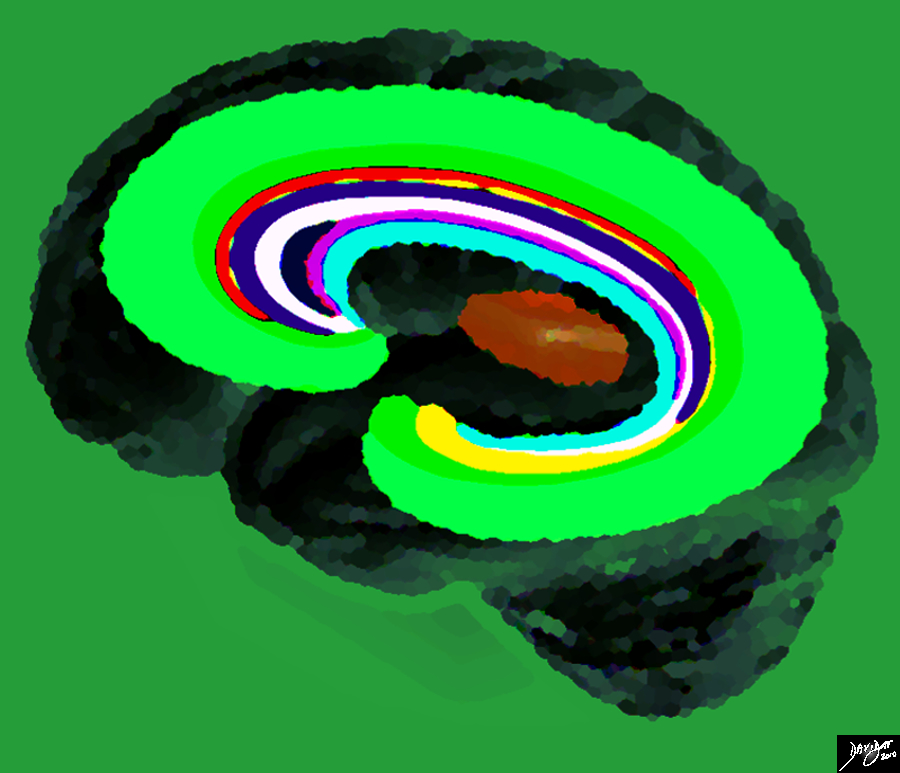“All About the Brain”- a web based educational module
The Common Vein Copyright 2010
Purpose/Aim
To integrate in one web based source the basic sciences with the clinical and imaging sciences of the brain in order to enhance the learning process.
To create an easily navigable system that allows the user to start with foundation principles and enable pathways for individualized advancement to complexity.
To use images and imagery extensively
Content Organization
“All About the Brain ” is a web based knowledge system founded in the basic principles of structure, function, disease, diagnosis, and treatment. The program starts with a definition and progresses in a logical and arborized pattern to more detailed complex information. The basic sciences and clinical sciences are treated separately but are integrated in one comprehensive source. The addition of historical events, art, and culture add richness to the program.
 The Brain The Brain |
|
The brain, even from the outside looks complex, despite the artistic attempt to create a homogeneous organ. It has been a challenge and will continue to be a challenge for scholars and the lay public alike for years to come. This artistic rendition of the brain with the inverted “C” rings of the forebrain overlaid over the cerebral hemispheres suggests complexity, but an organizational pattern that is within the realm of comprehension. 93907d14b11.9s The Common vein Davidoff art copyright 2010 |
The Brain From All Angles
Mian, A.1·Davidoff, A.2·Norbash, A.1
Approaches Method
To utilize a web-based method with an arborizing approach to understanding the multidisciplinary integrative nature of Neuroradiology
Finding/Discussion
Neuroradiology, as the center of a multidisciplinary web of knowledge, is in need of a self-directed teaching tool which incorporates self-navigated strings and subtopics such as neuroanatomic structure, neurophysiologic function, neuropathologic disease, neurologic diagnosis, historical perspectives, and treatment branching out from an entry portal, and permitting interconnected searching between the branches. This permits the learner to follow increasingly detailed descriptions of complex topics at their own pace. Such an approach facilitates a shared comprehension of the clinical questions and neurosurgical implications by both the non-imaging clinicians and by the neuroradiologist.
Summary/Conclusion
A successful and robust web-based teaching tool including over a thousand images has been created which addresses the need for integrative self-directed learning of the neurological sciences. The infrastructure is organized around basic principles which progressively advance to more detailed complexity.
